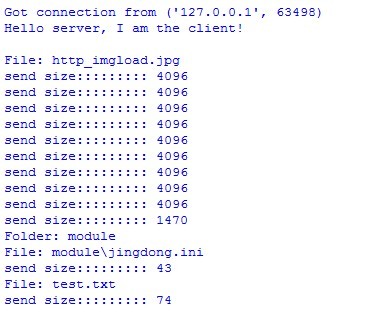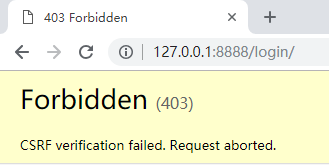Python实现的朴素贝叶斯算法经典示例【测试可用】
本文实例讲述了Python实现的朴素贝叶斯算法。分享给大家供大家参考,具体如下:
代码主要参考机器学习实战那本书,发现最近老外的书确实比中国人写的好,由浅入深,代码通俗易懂,不多说上代码:
#encoding:utf-8
'''''
Created on 2015年9月6日
@author: ZHOUMEIXU204
朴素贝叶斯实现过程
'''
#在该算法中类标签为1和0,如果是多标签稍微改动代码既可
import numpy as np
path=u"D:\\Users\\zhoumeixu204\Desktop\\python语言机器学习\\机器学习实战代码 python\\机器学习实战代码\\machinelearninginaction\\Ch04\\"
def loadDataSet():
postingList=[['my', 'dog', 'has', 'flea', 'problems', 'help', 'please'],\
['maybe', 'not', 'take', 'him', 'to', 'dog', 'park', 'stupid'],\
['my', 'dalmation', 'is', 'so', 'cute', 'I', 'love', 'him'],\
['stop', 'posting', 'stupid', 'worthless', 'garbage'],\
['mr', 'licks', 'ate', 'my', 'steak', 'how', 'to', 'stop', 'him'],\
['quit', 'buying', 'worthless', 'dog', 'food', 'stupid']]
classVec = [0,1,0,1,0,1] #1 is abusive, 0 not
return postingList,classVec
def createVocabList(dataset):
vocabSet=set([])
for document in dataset:
vocabSet=vocabSet|set(document)
return list(vocabSet)
def setOfWordseVec(vocabList,inputSet):
returnVec=[0]*len(vocabList)
for word in inputSet:
if word in vocabList:
returnVec[vocabList.index(word)]=1 #vocabList.index() 函数获取vocabList列表某个元素的位置,这段代码得到一个只包含0和1的列表
else:
print("the word :%s is not in my Vocabulary!"%word)
return returnVec
listOPosts,listClasses=loadDataSet()
myVocabList=createVocabList(listOPosts)
print(len(myVocabList))
print(myVocabList)
print(setOfWordseVec(myVocabList, listOPosts[0]))
print(setOfWordseVec(myVocabList, listOPosts[3]))
#上述代码是将文本转化为向量的形式,如果出现则在向量中为1,若不出现 ,则为0
def trainNB0(trainMatrix,trainCategory): #创建朴素贝叶斯分类器函数
numTrainDocs=len(trainMatrix)
numWords=len(trainMatrix[0])
pAbusive=sum(trainCategory)/float(numTrainDocs)
p0Num=np.ones(numWords);p1Num=np.ones(numWords)
p0Deom=2.0;p1Deom=2.0
for i in range(numTrainDocs):
if trainCategory[i]==1:
p1Num+=trainMatrix[i]
p1Deom+=sum(trainMatrix[i])
else:
p0Num+=trainMatrix[i]
p0Deom+=sum(trainMatrix[i])
p1vect=np.log(p1Num/p1Deom) #change to log
p0vect=np.log(p0Num/p0Deom) #change to log
return p0vect,p1vect,pAbusive
listOPosts,listClasses=loadDataSet()
myVocabList=createVocabList(listOPosts)
trainMat=[]
for postinDoc in listOPosts:
trainMat.append(setOfWordseVec(myVocabList, postinDoc))
p0V,p1V,pAb=trainNB0(trainMat, listClasses)
if __name__!='__main__':
print("p0的概况")
print (p0V)
print("p1的概率")
print (p1V)
print("pAb的概率")
print (pAb)
运行结果:
32
['him', 'garbage', 'problems', 'take', 'steak', 'quit', 'so', 'is', 'cute', 'posting', 'dog', 'to', 'love', 'licks', 'dalmation', 'flea', 'I', 'please', 'maybe', 'buying', 'my', 'stupid', 'park', 'food', 'stop', 'has', 'ate', 'help', 'how', 'mr', 'worthless', 'not']
[0, 0, 1, 0, 0, 0, 0, 0, 0, 0, 1, 0, 0, 0, 0, 1, 0, 1, 0, 0, 1, 0, 0, 0, 0, 1, 0, 1, 0, 0, 0, 0]
[0, 1, 0, 0, 0, 0, 0, 0, 0, 1, 0, 0, 0, 0, 0, 0, 0, 0, 0, 0, 0, 1, 0, 0, 1, 0, 0, 0, 0, 0, 1, 0]
# -*- coding:utf-8 -*-
#!python2
#构建样本分类器testEntry=['love','my','dalmation'] testEntry=['stupid','garbage']到底属于哪个类别
import numpy as np
def loadDataSet():
postingList=[['my', 'dog', 'has', 'flea', 'problems', 'help', 'please'],\
['maybe', 'not', 'take', 'him', 'to', 'dog', 'park', 'stupid'],\
['my', 'dalmation', 'is', 'so', 'cute', 'I', 'love', 'him'],\
['stop', 'posting', 'stupid', 'worthless', 'garbage'],\
['mr', 'licks', 'ate', 'my', 'steak', 'how', 'to', 'stop', 'him'],\
['quit', 'buying', 'worthless', 'dog', 'food', 'stupid']]
classVec = [0,1,0,1,0,1] #1 is abusive, 0 not
return postingList,classVec
def createVocabList(dataset):
vocabSet=set([])
for document in dataset:
vocabSet=vocabSet|set(document)
return list(vocabSet)
def setOfWordseVec(vocabList,inputSet):
returnVec=[0]*len(vocabList)
for word in inputSet:
if word in vocabList:
returnVec[vocabList.index(word)]=1 #vocabList.index() 函数获取vocabList列表某个元素的位置,这段代码得到一个只包含0和1的列表
else:
print("the word :%s is not in my Vocabulary!"%word)
return returnVec
def trainNB0(trainMatrix,trainCategory): #创建朴素贝叶斯分类器函数
numTrainDocs=len(trainMatrix)
numWords=len(trainMatrix[0])
pAbusive=sum(trainCategory)/float(numTrainDocs)
p0Num=np.ones(numWords);p1Num=np.ones(numWords)
p0Deom=2.0;p1Deom=2.0
for i in range(numTrainDocs):
if trainCategory[i]==1:
p1Num+=trainMatrix[i]
p1Deom+=sum(trainMatrix[i])
else:
p0Num+=trainMatrix[i]
p0Deom+=sum(trainMatrix[i])
p1vect=np.log(p1Num/p1Deom) #change to log
p0vect=np.log(p0Num/p0Deom) #change to log
return p0vect,p1vect,pAbusive
def classifyNB(vec2Classify,p0Vec,p1Vec,pClass1):
p1=sum(vec2Classify*p1Vec)+np.log(pClass1)
p0=sum(vec2Classify*p0Vec)+np.log(1.0-pClass1)
if p1>p0:
return 1
else:
return 0
def testingNB():
listOPosts,listClasses=loadDataSet()
myVocabList=createVocabList(listOPosts)
trainMat=[]
for postinDoc in listOPosts:
trainMat.append(setOfWordseVec(myVocabList, postinDoc))
p0V,p1V,pAb=trainNB0(np.array(trainMat),np.array(listClasses))
print("p0V={0}".format(p0V))
print("p1V={0}".format(p1V))
print("pAb={0}".format(pAb))
testEntry=['love','my','dalmation']
thisDoc=np.array(setOfWordseVec(myVocabList, testEntry))
print(thisDoc)
print("vec2Classify*p0Vec={0}".format(thisDoc*p0V))
print(testEntry,'classified as :',classifyNB(thisDoc, p0V, p1V, pAb))
testEntry=['stupid','garbage']
thisDoc=np.array(setOfWordseVec(myVocabList, testEntry))
print(thisDoc)
print(testEntry,'classified as :',classifyNB(thisDoc, p0V, p1V, pAb))
if __name__=='__main__':
testingNB()
运行结果:
p0V=[-3.25809654 -2.56494936 -3.25809654 -3.25809654 -2.56494936 -2.56494936
-3.25809654 -2.56494936 -2.56494936 -3.25809654 -2.56494936 -2.56494936
-2.56494936 -2.56494936 -1.87180218 -2.56494936 -2.56494936 -2.56494936
-2.56494936 -2.56494936 -2.56494936 -3.25809654 -3.25809654 -2.56494936
-2.56494936 -3.25809654 -2.15948425 -2.56494936 -3.25809654 -2.56494936
-3.25809654 -3.25809654]
p1V=[-2.35137526 -3.04452244 -1.94591015 -2.35137526 -1.94591015 -3.04452244
-2.35137526 -3.04452244 -3.04452244 -1.65822808 -3.04452244 -3.04452244
-2.35137526 -3.04452244 -3.04452244 -3.04452244 -3.04452244 -3.04452244
-3.04452244 -3.04452244 -3.04452244 -2.35137526 -2.35137526 -3.04452244
-3.04452244 -2.35137526 -2.35137526 -3.04452244 -2.35137526 -2.35137526
-2.35137526 -2.35137526]
pAb=0.5
[0 0 0 0 0 0 0 0 0 0 0 0 0 0 1 0 0 1 0 0 0 0 0 0 0 0 0 1 0 0 0 0]
vec2Classify*p0Vec=[-0. -0. -0. -0. -0. -0. -0.
-0. -0. -0. -0. -0. -0. -0.
-1.87180218 -0. -0. -2.56494936 -0. -0. -0.
-0. -0. -0. -0. -0. -0.
-2.56494936 -0. -0. -0. -0. ]
['love', 'my', 'dalmation'] classified as : 0
[0 0 0 0 0 0 0 0 0 1 0 0 0 0 0 0 0 0 0 0 0 0 0 0 0 0 0 0 0 0 0 1]
['stupid', 'garbage'] classified as : 1
# -*- coding:utf-8 -*-
#! python2
#使用朴素贝叶斯过滤垃圾邮件
# 1.收集数据:提供文本文件
# 2.准备数据:讲文本文件见习成词条向量
# 3.分析数据:检查词条确保解析的正确性
# 4.训练算法:使用我们之前简历的trainNB0()函数
# 5.测试算法:使用classifyNB(),并且对建一个新的测试函数来计算文档集的错误率
# 6.使用算法,构建一个完整的程序对一组文档进行分类,将错分的文档输出到屏幕上
# import re
# mySent='this book is the best book on python or M.L. I hvae ever laid eyes upon.'
# print(mySent.split())
# regEx=re.compile('\\W*')
# print(regEx.split(mySent))
# emailText=open(path+"email\\ham\\6.txt").read()
import numpy as np
path=u"C:\\py\\jb51PyDemo\\src\\Demo\\Ch04\\"
def loadDataSet():
postingList=[['my', 'dog', 'has', 'flea', 'problems', 'help', 'please'],\
['maybe', 'not', 'take', 'him', 'to', 'dog', 'park', 'stupid'],\
['my', 'dalmation', 'is', 'so', 'cute', 'I', 'love', 'him'],\
['stop', 'posting', 'stupid', 'worthless', 'garbage'],\
['mr', 'licks', 'ate', 'my', 'steak', 'how', 'to', 'stop', 'him'],\
['quit', 'buying', 'worthless', 'dog', 'food', 'stupid']]
classVec = [0,1,0,1,0,1] #1 is abusive, 0 not
return postingList,classVec
def createVocabList(dataset):
vocabSet=set([])
for document in dataset:
vocabSet=vocabSet|set(document)
return list(vocabSet)
def setOfWordseVec(vocabList,inputSet):
returnVec=[0]*len(vocabList)
for word in inputSet:
if word in vocabList:
returnVec[vocabList.index(word)]=1 #vocabList.index() 函数获取vocabList列表某个元素的位置,这段代码得到一个只包含0和1的列表
else:
print("the word :%s is not in my Vocabulary!"%word)
return returnVec
def trainNB0(trainMatrix,trainCategory): #创建朴素贝叶斯分类器函数
numTrainDocs=len(trainMatrix)
numWords=len(trainMatrix[0])
pAbusive=sum(trainCategory)/float(numTrainDocs)
p0Num=np.ones(numWords);p1Num=np.ones(numWords)
p0Deom=2.0;p1Deom=2.0
for i in range(numTrainDocs):
if trainCategory[i]==1:
p1Num+=trainMatrix[i]
p1Deom+=sum(trainMatrix[i])
else:
p0Num+=trainMatrix[i]
p0Deom+=sum(trainMatrix[i])
p1vect=np.log(p1Num/p1Deom) #change to log
p0vect=np.log(p0Num/p0Deom) #change to log
return p0vect,p1vect,pAbusive
def classifyNB(vec2Classify,p0Vec,p1Vec,pClass1):
p1=sum(vec2Classify*p1Vec)+np.log(pClass1)
p0=sum(vec2Classify*p0Vec)+np.log(1.0-pClass1)
if p1>p0:
return 1
else:
return 0
def textParse(bigString):
import re
listOfTokens=re.split(r'\W*',bigString)
return [tok.lower() for tok in listOfTokens if len(tok)>2]
def spamTest():
docList=[];classList=[];fullText=[]
for i in range(1,26):
wordList=textParse(open(path+"email\\spam\\%d.txt"%i).read())
docList.append(wordList)
fullText.extend(wordList)
classList.append(1)
wordList=textParse(open(path+"email\\ham\\%d.txt"%i).read())
docList.append(wordList)
fullText.extend(wordList)
classList.append(0)
vocabList=createVocabList(docList)
trainingSet=range(50);testSet=[]
for i in range(10):
randIndex=int(np.random.uniform(0,len(trainingSet)))
testSet.append(trainingSet[randIndex])
del (trainingSet[randIndex])
trainMat=[];trainClasses=[]
for docIndex in trainingSet:
trainMat.append(setOfWordseVec(vocabList, docList[docIndex]))
trainClasses.append(classList[docIndex])
p0V,p1V,pSpam=trainNB0(np.array(trainMat),np.array(trainClasses))
errorCount=0
for docIndex in testSet:
wordVector=setOfWordseVec(vocabList, docList[docIndex])
if classifyNB(np.array(wordVector), p0V, p1V, pSpam)!=classList[docIndex]:
errorCount+=1
print 'the error rate is :',float(errorCount)/len(testSet)
if __name__=='__main__':
spamTest()
运行结果:
the error rate is : 0.0
其中,path路径所使用到的Ch04文件点击此处本站下载。
注:本文算法源自《机器学习实战》一书。
更多关于Python相关内容感兴趣的读者可查看本站专题:《Python数学运算技巧总结》、《Python数据结构与算法教程》、《Python函数使用技巧总结》、《Python字符串操作技巧汇总》、《Python入门与进阶经典教程》及《Python文件与目录操作技巧汇总》
希望本文所述对大家Python程序设计有所帮助。


